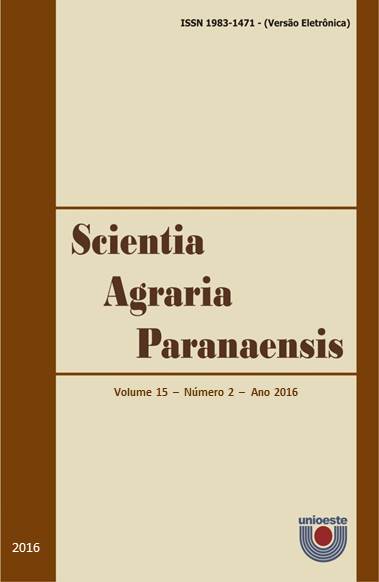Destination and reuse of by products from olive oil extraction
DOI:
https://doi.org/10.18188/sap.v15i2.11905Keywords:
Bagaço, Olea europaea, processamento, reaproveitamentoAbstract
The waste obtained from olive oil extraction process are by products generated in different ways and composition, according to the used extraction equipment, the olive variety and the fruit maturity. In the olives pressing traditional process, using continuous three-phase process, the waste produced comprise the liquid portion (vegetation water) + solid portion (solid waste). The olive solid portion to suffer new extraction produces the oil residue, while the aqueous residue is usually discarded without control, causing various environmental problems. When using a two-phase system for oil production, the problem is eliminated, resulting in a new waste, known as ‘alperujo’ and water vegetation. The industries of olive extraction are trying to invest in alternatives that enable the use of their waste as fertilizer, herbicide, animal feed and residual oil. Therefore, studies in this area are needed in order to generate new alternatives for the reuse of extractive industry waste, contributing to the sustainability and reducing environmental impact.
Downloads
Published
How to Cite
Issue
Section
License
Aviso de Direito Autoral Creative Commons
Política para Periódicos de Acesso Livre
Autores que publicam nesta revista concordam com os seguintes termos:
1. Autores mantém os direitos autorais e concedem à revista o direito de primeira publicação, com o trabalho simultaneamente licenciado sob a Licença Creative Commons Attribution que permite o compartilhamento do trabalho com reconhecimento da autoria e publicação inicial nesta revista.2. Autores têm autorização para assumir contratos adicionais separadamente, para distribuição não-exclusiva da versão do trabalho publicada nesta revista (ex.: publicar em repositório institucional ou como capítulo de livro), com reconhecimento de autoria e publicação inicial nesta revista.
3. Autores têm permissão e são estimulados a publicar e distribuir seu trabalho online (ex.: em repositórios institucionais ou na sua página pessoal) a qualquer ponto antes ou durante o processo editorial, já que isso pode gerar alterações produtivas, bem como aumentar o impacto e a citação do trabalho publicado (Veja O Efeito do Acesso Livre).
Licença Creative Commons
Esta obra está licenciada com uma Licença Creative Commons Atribuição-NãoComercial-CompartilhaIgual 4.0 Internacional, o que permite compartilhar, copiar, distribuir, exibir, reproduzir, a totalidade ou partes desde que não tenha objetivo comercial e sejam citados os autores e a fonte.


